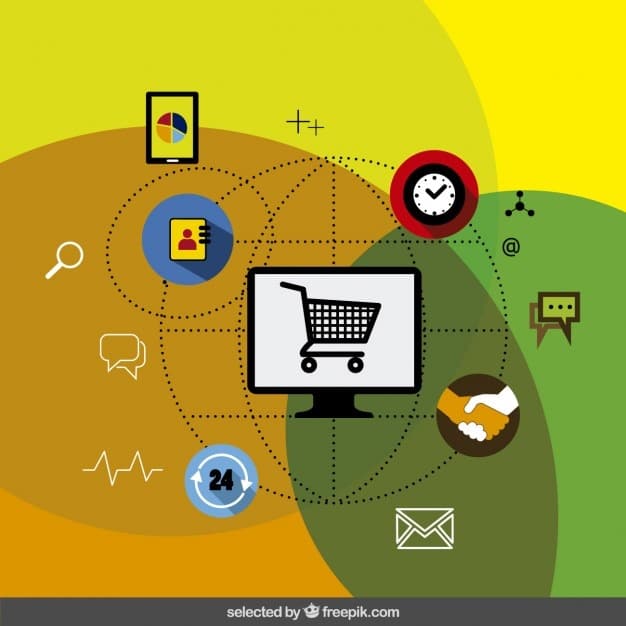Boost Your E-commerce ROI: 5 Digital Marketing Tactics for 2025

Boosting your e-commerce ROI in 2025 requires a strategic approach encompassing personalized customer experiences, data-driven insights, and innovative marketing technologies such as AI-powered automation and immersive shopping experiences.
Ready to transform your e-commerce strategy and see a significant return on investment? In today’s digital landscape, staying ahead means embracing the latest marketing innovations. Let’s explore how you can boost your ROI: 5 digital marketing tactics for e-commerce in 2025.
Harnessing Personalization for Maximum E-commerce ROI
Personalization is no longer a luxury; it’s a necessity. In 2025, e-commerce businesses that fail to deliver tailored experiences will struggle to compete. This involves understanding your customers’ preferences, behaviors, and purchase history to create relevant and engaging interactions.
Leveraging Customer Data
The foundation of personalization lies in data. Collect and analyze customer data from various sources, including website activity, purchase history, social media interactions, and email engagement. This data provides valuable insights into customer preferences and behaviors.
Personalized Product Recommendations
Use data to provide personalized product recommendations. Implement recommendation engines that suggest products based on browsing history, past purchases, and trending items. This increases the likelihood of upselling and cross-selling.
- Dynamic Content: Customize website content based on user demographics and behavior.
- Personalized Emails: Send targeted email campaigns with personalized product recommendations and offers.
- Behavioral Segmentation: Segment your audience based on behavior and tailor marketing messages accordingly.
By focusing on personalization, e-commerce businesses can create more meaningful customer relationships, improve customer loyalty, and ultimately increase ROI. Remember, every interaction is an opportunity to provide value and build trust.

AI-Powered Automation in E-commerce Marketing
Artificial intelligence (AI) is revolutionizing e-commerce marketing, offering unprecedented opportunities for automation and efficiency. By 2025, AI-powered tools will be essential for optimizing marketing campaigns and improving the customer experience.
Chatbots for Customer Service
Implement AI-powered chatbots to provide instant customer support. Chatbots can answer common questions, guide customers through the purchasing process, and resolve issues quickly, improving customer satisfaction and reducing the workload on human agents.
Predictive Analytics
Use AI to forecast trends and predict customer behavior. Predictive analytics can help you anticipate demand, optimize inventory management, and personalize marketing campaigns for better results.
- Automated Email Marketing: Use AI to automate email marketing campaigns based on customer behavior and preferences.
- Smart Bidding: Leverage AI-powered bidding tools for paid advertising campaigns to optimize ad spend and maximize ROI.
- Content Creation: Utilize AI to generate engaging content, including product descriptions and social media posts.
Embracing AI-powered automation can significantly improve the efficiency and effectiveness of your e-commerce marketing efforts. By automating repetitive tasks and leveraging AI insights, you can focus on strategic initiatives and drive higher ROI.
The Power of Immersive Shopping Experiences
In 2025, e-commerce is about more than just selling products online; it’s about creating immersive shopping experiences that engage customers and drive conversions. This involves leveraging technologies like augmented reality (AR) and virtual reality (VR) to provide interactive and engaging shopping experiences.
Augmented Reality (AR) Product Visualization
Implement AR features on your website and app to allow customers to visualize products in their own environment. For example, customers can use AR to see how furniture would look in their home before making a purchase.
Virtual Reality (VR) Shopping Environments
Create virtual reality shopping environments that allow customers to browse products in a simulated store. VR can provide a more immersive and engaging shopping experience similar to in-store shopping.

- 360-Degree Product Views: Offer 360-degree product views to give customers a more detailed look at products.
- Interactive Product Configurator: Allow customers to customize products with interactive configurators that provide a real-time preview.
- Virtual Try-On: Implement virtual try-on features for clothing and accessories to allow customers to see how products look on them.
By creating immersive shopping experiences, e-commerce businesses can differentiate themselves from competitors and provide a more engaging and memorable shopping experience for customers. This can lead to increased customer satisfaction, loyalty, and ultimately, higher ROI.
Data-Driven Decision-Making in E-commerce
Data is the backbone of successful e-commerce marketing. In 2025, businesses must leverage data analytics to make informed decisions and optimize their marketing strategies. This involves tracking key performance indicators (KPIs) and using data to identify areas for improvement.
Tracking Key Performance Indicators (KPIs)
Identify and track key performance indicators (KPIs) that are relevant to your business goals. This may include metrics such as conversion rate, customer acquisition cost (CAC), customer lifetime value (CLTV), and return on ad spend (ROAS).
A/B Testing
Conduct A/B tests to optimize website elements, marketing campaigns, and product offerings. A/B testing allows you to compare different versions of a webpage or marketing message to see which performs better.
- Website Analytics: Use tools like Google Analytics to track website traffic, user behavior, and conversion rates.
- Customer Surveys: Conduct customer surveys to gather feedback and insights.
- Heatmaps: Use heatmaps to visualize user behavior on your website and identify areas for improvement.
By embracing data-driven decision-making, e-commerce businesses can optimize their marketing strategies, improve customer experience, and drive higher ROI. Make sure that every marketing action is informed by data and analytics.
Mobile-First Strategies for E-commerce Success
Mobile devices are the primary way many customers interact with e-commerce businesses. In 2025, having a mobile-first strategy is crucial for reaching customers and driving conversions. This involves optimizing your website and marketing campaigns for mobile devices.
Responsive Website Design
Ensure your website is responsive and provides a seamless experience on all devices, including smartphones and tablets. A responsive website adapts to the screen size of the device, providing an optimal viewing experience.
Mobile-Friendly Email Marketing
Optimize your email marketing campaigns for mobile devices. Use a mobile-friendly email template, and ensure the content is easy to read on a small screen. Include clear calls to action and avoid large images that can slow down the loading time.
- Mobile Apps: Consider developing a mobile app to provide a more engaging and personalized shopping experience.
- Mobile Payments: Offer a variety of mobile payment options, such as Apple Pay and Google Pay, to make it easier for customers to make purchases on their mobile devices.
- SMS Marketing: Use SMS marketing to send targeted messages and promotions to customers on their mobile phones.
By prioritizing mobile-first strategies, e-commerce businesses can reach a wider audience, improve customer engagement, and drive higher ROI. Mobile is not just a trend, it’s the present and future of e-commerce.
| Key Tactic | Brief Description |
|---|---|
| 🎯Personalization | Tailor experiences to individual customer preferences. |
| 🤖AI Automation | Use AI for chatbots, predictive analytics, and smart bidding. |
| 📱Mobile-First | Optimize for mobile devices and offer mobile payment options. |
| 📊Data-Driven | Utilize data and analytics for informed decision-making. |
[Frequently Asked Questions]
▼
Personalization enhances customer experience, fosters loyalty, and drives higher conversion rates by providing tailored product recommendations and content.
▼
AI automates tasks like customer service, streamlines the email marketing, optimizes ad spends, and offers predictive analytics for better decision-making.
▼
Immersive experiences use technologies like augmented or virtual reality to create engaging ways for customers to interact with products.
▼
Mobile devices are primary for most shoppers; optimizing ensures a seamless experience, wider reach, more engagement, and conversion.
▼
Using actionable insights from data to optimize marketing strategies, improves customer experiences, minimizes costs and maximize returns.
Conclusion
Embracing these five digital marketing tactics can significantly boost your ROI: 5 digital marketing tactics for e-commerce in 2025. Prioritizing personalization, leveraging AI, creating immersive experiences, using data-driven decision-making, and adopting mobile-first strategies are essential steps to stay ahead in the fast-evolving e-commerce landscape and achieve sustained success.





